Go to EVIS EXERA III Bronchoscopy
Introducing EVIS EXERA III
Olympus is proud to introduce our latest generation video endoscopy system, EVIS EXERA III. A result of our commitment to research and development and our collaborative efforts with the medical community, EVIS EXERA III sets new standards for endoscopy by focusing upon:
- Advancing Visualisation
- Advancing Control
Innovative technologies in these focus areas help facilitate more accurate diagnosis and treatment, simplify setup and reprocessing, improve workflow, and link patient and department information to the hospital information system through smart integrative technologies.
EVIS EXERA III is Advancing the Art of Endoscopy with an array of opto-digital innovations.
Enhanced Image Quality
HQ scopes employ advanced OLYMPUS optics, improved image sensors and the new CV-190 video processor to deliver exceptionally clear, high-resolution images. The result is superior imaging with reduced halation and image noise and increased contrast and brightness. In the EVIS EXERA III generation, high-definition imaging will become standard on the core range of endoscopes.

Dual Focus
Dual focus two-stage optical lens technology from OLYMPUS allows physicians to switch from normal focus mode to near focus mode with a single button, so they can conduct close examination of mucosal tissue and capillary networks. The new technology lets physicians select the desired depth of field and obtain high-quality images at the same time, bringing a new level of visualization to routine examinations.
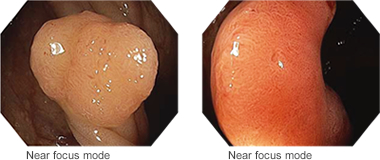
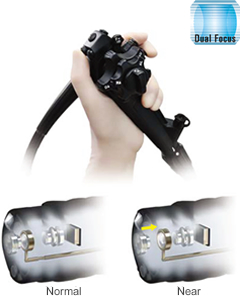
PRE-FREEZE
Capture a crisp, clear image the first time. EVIS EXERA III dramatically increases the sharpness and clarity of still-image captures, due to a new still-image capture algorithm.
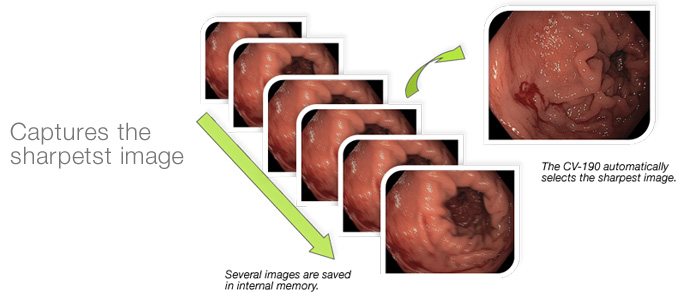
Wider Angle
The 170° wide-angle field of view, which has been standard on adult OLYMPUS colonoscopes, is now available on regular EVIS EXERA III 190 Series pediatric scopes (PCF-H190L/I). The benefits of wide-angle endoscopy include brighter imaging on the periphery and a 30° wider field of view. This can help physicians to detect mucosal changes more rapidly with less need for angulation.
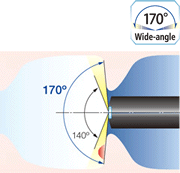
Clinical images courtesy of Roy Soetikno, MD/Tonya Kaltenbach, MD
Responsive Insertion Technology
RIT consists of three technologies that work together to improve ease of insertion and operator control, which may help to minimize patient discomfort and enhance procedural efficiency.
Passive Bending
The new insertion section includes a soft passive bending section that better follows the passage through acute turns.
High Force Transmission
High Force Transmission enables a 1:1 transfer of pushing &rotating forces to the distal end of the colonoscope, improving ergonomics and scope responsiveness.
Variable Stiffness
Variable stiffness allows the flexibility a scope to be changed incrementally by manipulating a flexibility adjustment ring.
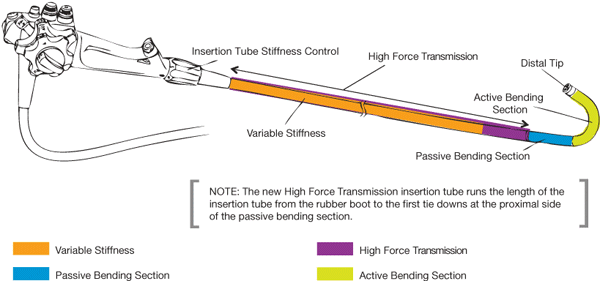
Passive Bending
This technology allows for smooth passage through acute flexures by allowing the distal tip of the scope to “deflect” and conform to the natural anatomy. Conventional scopes create a “candy cane” effect causing distended anatomy, patient discomfort and procedural difficulty.

High Force Transmission
High Force Transmission enables a 1:1 transfer of pushing & rotating forces to the distal end of the colonoscope, improving ergonomics and scope responsiveness.

Variable Stiffness
Variable stiffness allows the flexibility of a scope to be changed incrementally by manipulating a flexibility adjustment ring.

NBI
Narrow Band Imaging (NBI) is an optical image enhancement technology that enhances the visibility and characterisation of healthy and abnormal tissue and other structures on the mucosal surface. Now with EVIS EXERA III, there is 1.5 times brighter light which gives twice the viewable distance and much greater contrast under NBI, which opens up new clinical applications and reinforces NBI’s acceptance as a standard of care.
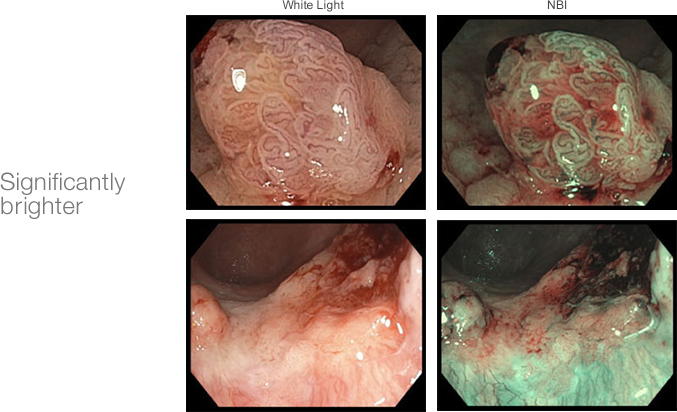
Clinical images courtesy of Roy Soetikno, MD/Tonya Kaltenbach, MD
ScopeGuide
ScopeGuide is a GPS for the colon designed to improve efficiency and patient comfort, even during difficult procedures. ScopeGuide is integrated into EVIS EXERA III with the CF-HQ190 colonoscope.
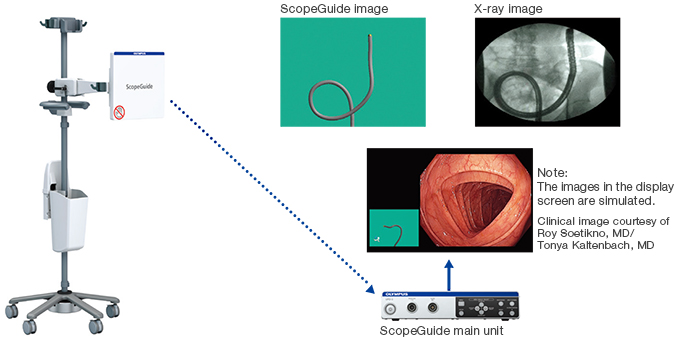
Gastroscopes
Colonoscopes
EVIS EXERA III Video Colonoscope
PCF-PH190
- New ultra-thin design defining a new type of colonoscope
- Outstanding, true-to-life HD image quality
- Brighter, more powerful Narrow Band Imaging
Contents end













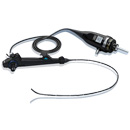




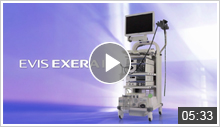
 VISERA ELITE III Video System Center
VISERA ELITE III Video System Center VISERA ELITE III LED Light Source
VISERA ELITE III LED Light Source 4K Camera Head
4K Camera Head ENDOEYE FLEX 3D
ENDOEYE FLEX 3D Bipolar Electrosurgical Instrument
Bipolar Electrosurgical Instrument